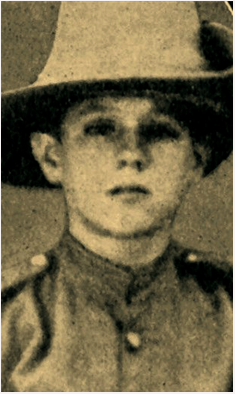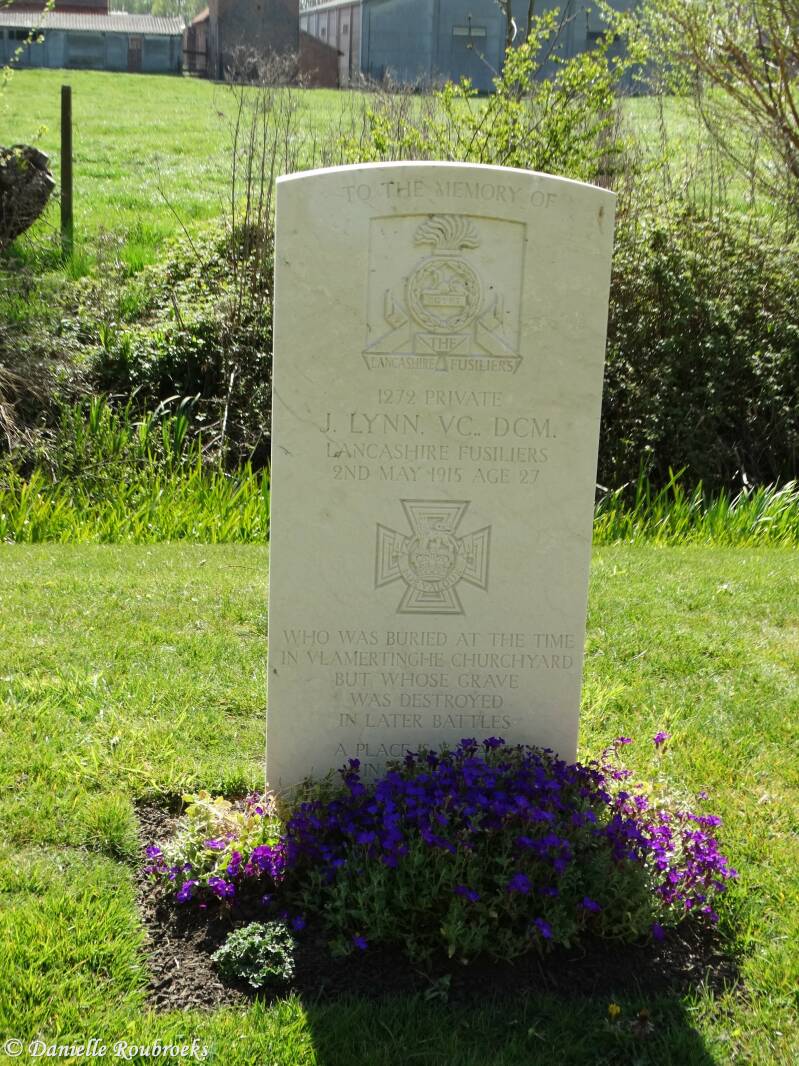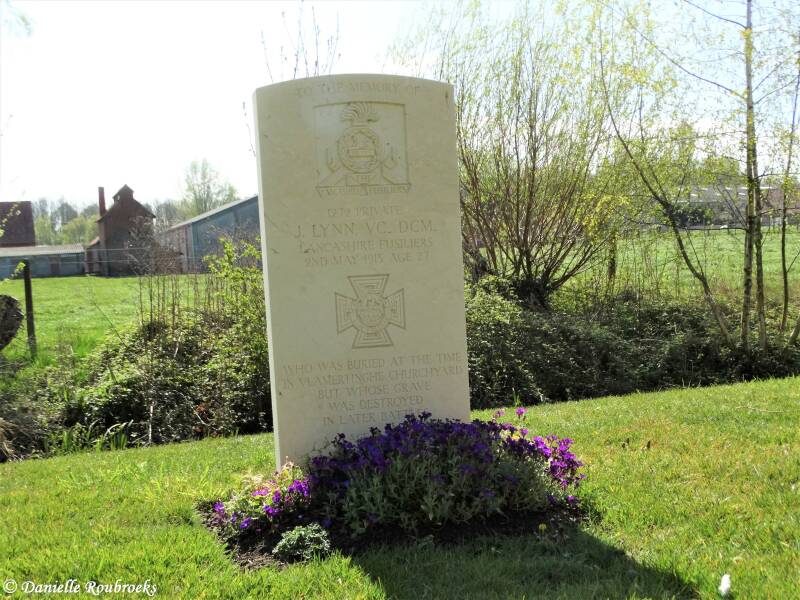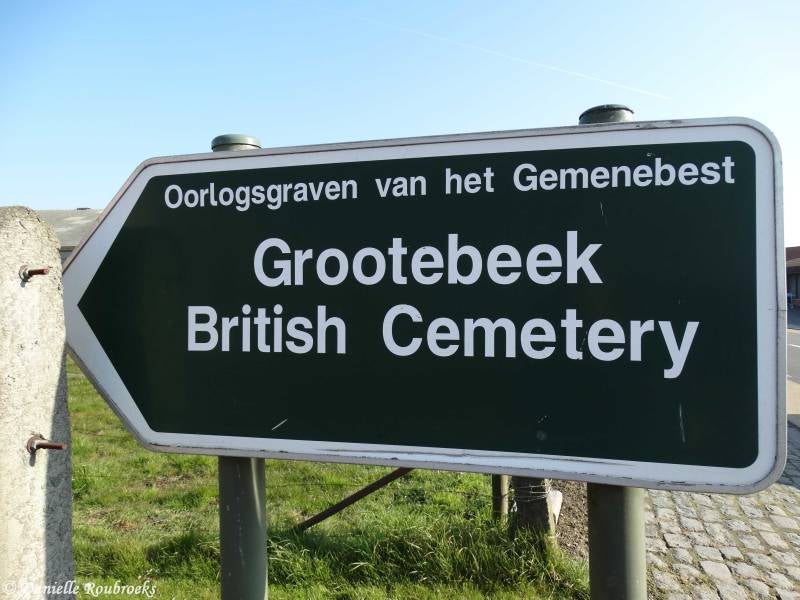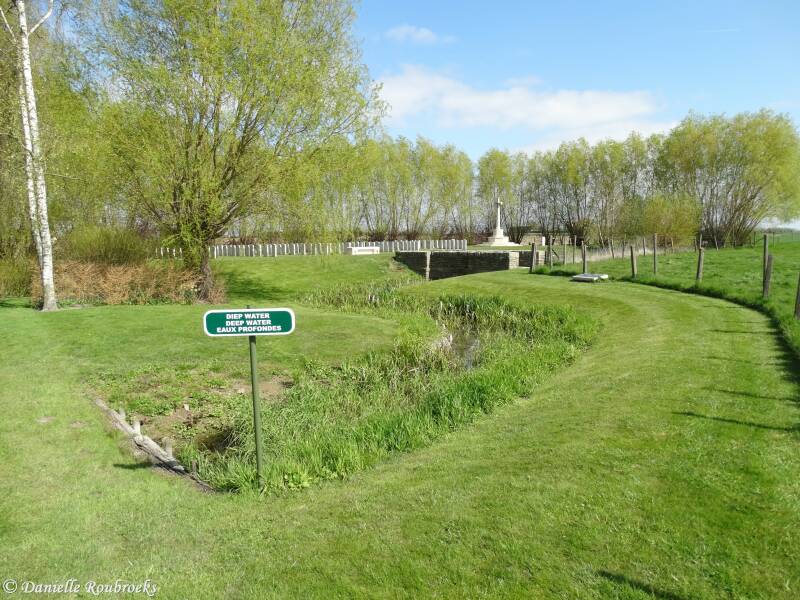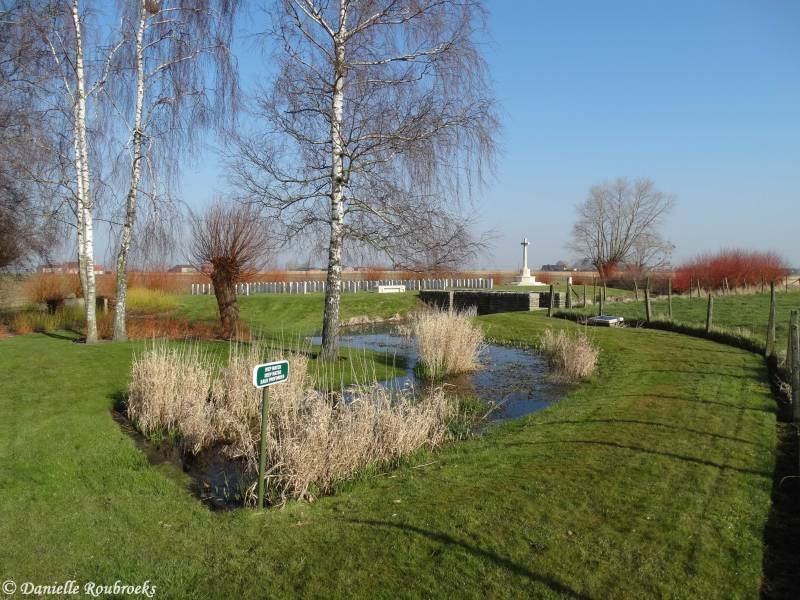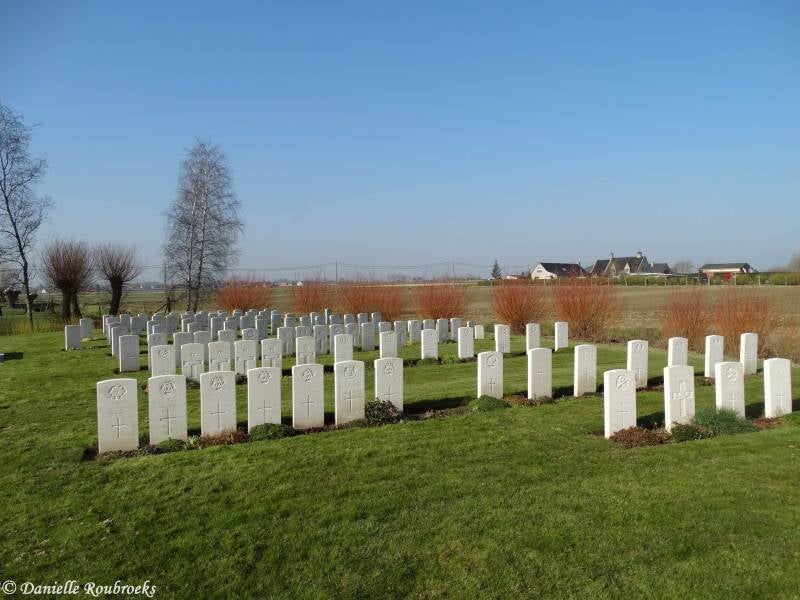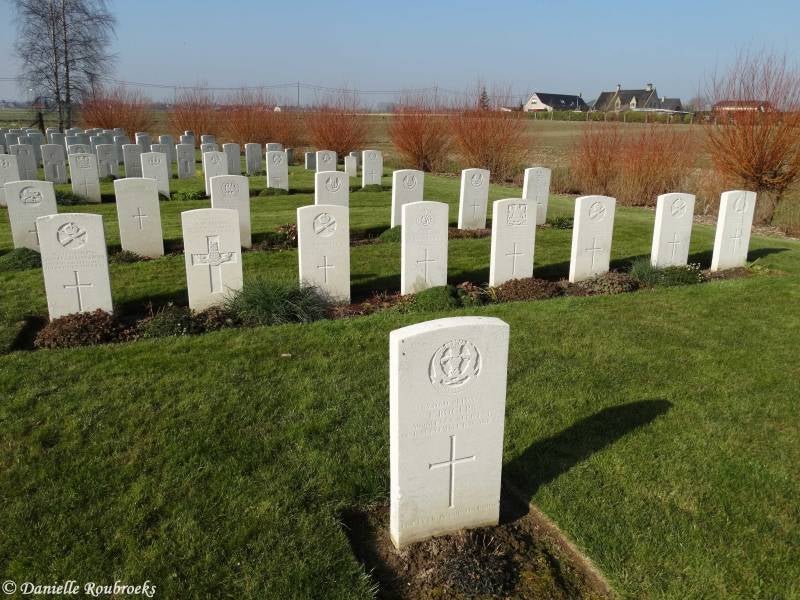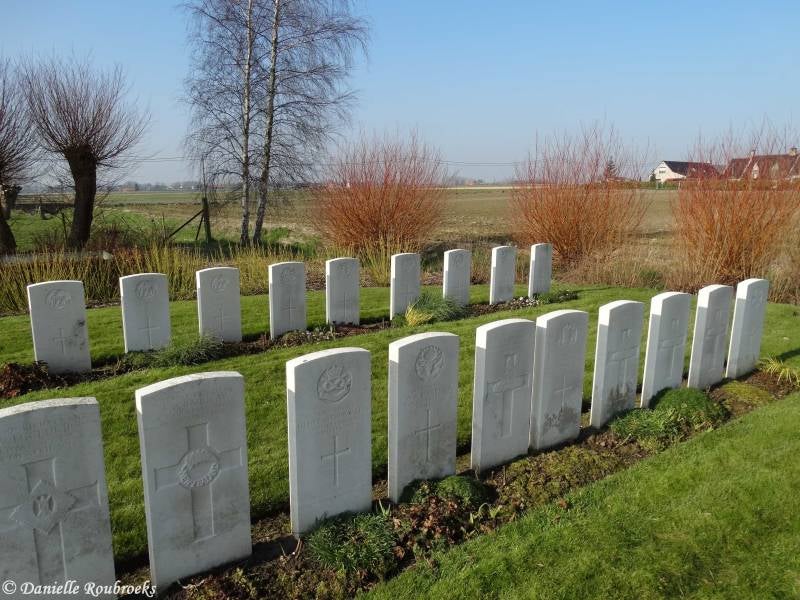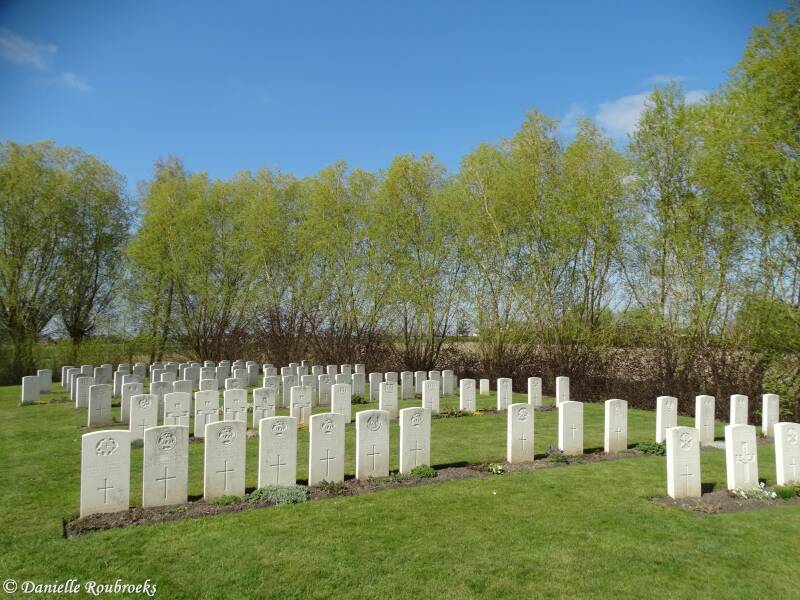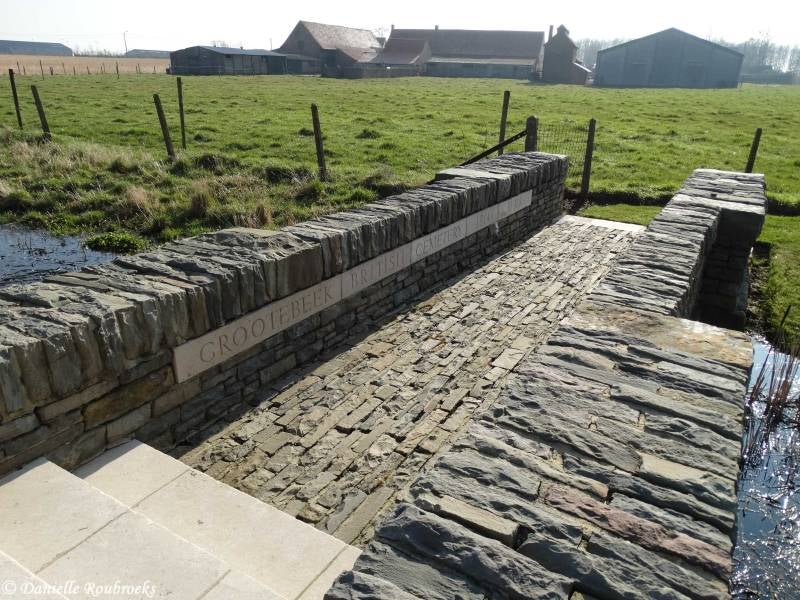Grootebeek British Cemetery
History Information (Source: CWGC)
The village of Reninghelst was in Allied hands from the autumn of 1914 to the end of the First World War. From March 1915, Commonwealth burials were made in the Churchyard, the Churchyard Extension and the New Military Cemetery, but in April 1918, during the Battles of the Lys, a new cemetery was made by field ambulances and fighting units near the hamlet of Ouderdom, on the Poperinghe-Wytschaete road. It was originally called OUDERDOM MILITARY CEMETERY, but later renamed Grootebeek British Cemetery, from the stream (Grootebeek, or Groote Kemmelbeek) which runs beside it. It was used at intervals until the end of September 1918 and it absorbed a small Indian cemetery made on the spot in April 1915.
The cemetery contains 109 Commonwealth burials and commemorations of the First World War. One grave destroyed by shell fire is now represented by a special memorial, and another special memorial records the name of Pte J. Lynn, VC, who was buried in Vlamertinghe Churchyard but whose grave was similarly destroyed. The two Second World War burials date from May 1940 and the withdrawal of the British Expeditionary Force ahead of the German advance. The cemetery was designed by W.H. Cowlishaw.
Served with
· United Kingdom (100)
· Indian (7)
· New Zealand (1)
· South African (1)
Served in
· Army (109)
VICTORIA CROSS
Private John LYNN - 1272 - 2nd Bn. Lancashire Fusiliers
Died 02 May 1915 Age 27
Country of Service: United Kingdom
Awards: Victoria Cross, Distinguished Conduct Medal
Citation
An extract from the "London Gazette," dated 29th June, 1915, records the following:-"For most conspicuous bravery near Ypres on 2nd May 1915. When the Germans were advancing behind their wave of asphyxiating gas, Pte. Lynn, although almost overcome by the deadly fumes, handled his machine gun with very great effect against the enemy, and when he could not see them he moved his gun higher up on the parapet, which enabled him to bring even more effective fire to bear, and eventually checked any further advance. The great courage displayed by this soldier had a fine effect on his comrades in the very trying circumstances. He died from the effects of gas poisoning."
Grave Reference: Vlamertinghe Churchyard Memorial.
(Source: Wikipedia)
John Lynn's original grave (now lost) was in Vlamertinghe Churchyard. A memorial headstone is in Grootebeek British Cemetery, bearing the inscription: WHO WAS BURIED AT THE TIME IN VLAMERTINGHE CHURCHYARD BUT WHOSE GRAVE WAS DESTROYED IN LATER BATTLES A PLACE IS VACANT IN OUR HOME THAT NEVER CAN BE FILLED.


